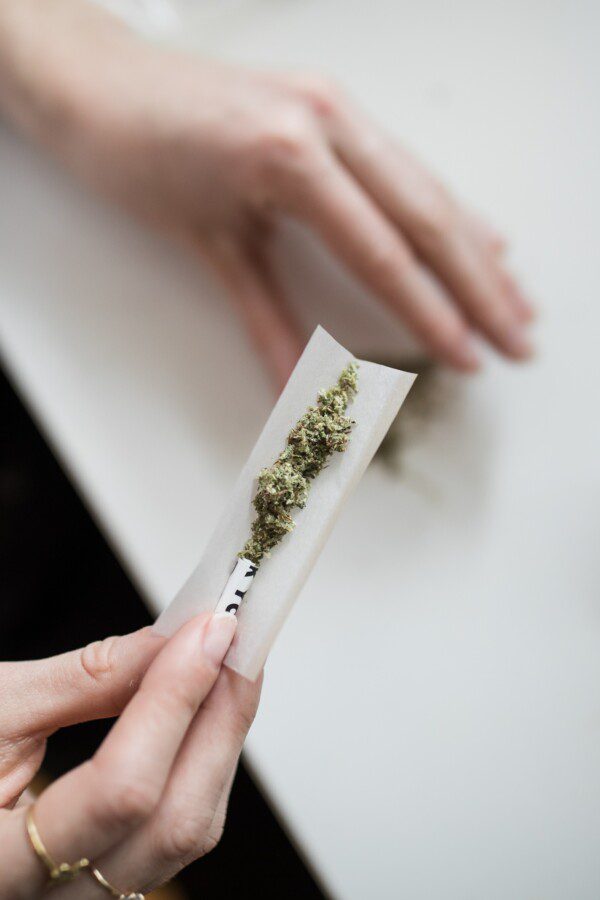More people than ever are shopping online. You can get just about anything you want delivered to your door in a matter of days.
And with that comes a LOT of packaging materials! Cardboard boxes, styrofoam, plastic bags, and of course… packing peanuts!
The vast majority of this packaging is wasteful, so some brands and manufacturers have started coming up with more eco-friendly packaging options. This includes things like compostable corn mailers, biodegradable mushroom packaging, and more.
Considering that many of these new packaging materials are made out of plant-based and food-like substances, it’s got some people on the internet (thank you, Tik Tok) eating them.
So in this article, we’re going to look at one of the most common packaging materials: foam peanuts. Are they edible, or not? Are packing peanuts toxic if you, your kid, or your dog/cat ingests them?
Let’s clear it all up.
Table of Contents
- First Things First: What Even Are Packing Peanuts?
- What Are Packing Peanuts Made Of?
- So If They’re Made from Plants… Does That Mean You Can Eat Them? Or Are They Dangerous?
- Packing Peanuts & Sustainability
- Are Packing Peanuts Recyclable?
- Are Packing Peanuts Biodegradable?
- How to Tell if Your Packing Peanuts are Biodegradable or Not
- Do All Packing Peanuts Dissolve in Water?
- How Do You Dispose of Packing Peanuts?
- TL;DR: Sooo, Can We Eat Packing Peanuts Like Cheetos or Not?
First Things First: What Even Are Packing Peanuts?
You’ve almost certainly come across packing peanuts at some point. They’re those lightweight things that come in some of your packages that look kind of like short Cheetos. Most of the time they’re white, but they can also come in other colors like pink or green, too. They’re roughly the size of an unshelled peanut (hence the name). Although they can also come in other shapes, like an “S,” they most often look like this:

Also called foam peanuts, foam popcorn, or packing noodles, they provide cushioning for fragile items as they get tossed about during the shipping process. They are meant to interlock when they’re compressed and then free flow when not compressed. They’re super lightweight, too, which can help cut down on shipping costs and fuel.
What Are Packing Peanuts Made Of?
There are two primary types of packing peanuts, and this is likely where the confusion about whether they are edible/toxic/biodegradable/dissolvable comes from.
Styrofoam Packing Peanuts
Original packing peanuts, which were developed in the 1960s, were made from polystyrene foam and made commercially available by the huge chemical corporation, Dow Chemical. Polystyrene foam is a synthetic (man-made) chemical foam that’s essentially the same thing as styrofoam. It’s a type of plastic, which is a petroleum product.
Starch-Based Packing Peanuts
A newer, more eco-friendly form of peanuts was developed in the 1990s, although it’s only become much more widely used in the past decade. Instead of petroleum-based polystyrene, the new ones are made from plant-based starches like corn and/or grain.
Not only are starch-based packing peanuts more eco-friendly than their styrofoam predecessor, but they also don’t have an electrostatic charge, which means they’re not going to stick all over your goods. (So annoying!)
And now, since this more sustainable packing material is becoming more widely used by companies, it’s become just as affordable as the styrofoam kind.
So If They’re Made from Plants… Does That Mean You Can Eat Them? Or Are They Dangerous?
So, are packing peanuts edible or not? Let’s first talk about the styrofoam peanuts. Styrofoam peanuts ARE toxic and should NOT be eaten. As referenced above, the styrofoam peanuts are made from petroleum, which is usually not a good sign when it comes to toxicity. Although in small doses, styrofoam has been found to be completely safe for things like food containers, it should absolutely not be ingested. Not only will it likely cause some G.I. issues, but also the styrene monomer from which polystyrene is made is a suspected carcinogen.
But what about the starch peanuts? The good news is that starch-based peanuts, since they’re made from plant materials, are technically non-toxic if you, your child, or your pet ingests a couple of them on accident.
That being said, the starch peanuts are not produced in food-safe conditions. That means even though they’re non-toxic doesn’t mean you should start eating them as a mid-day snack or just let your dog go to town on them like dog food.
Not only that, but all of the nutritional value is actually extracted from the packing material during the manufacturing process so that they don’t attract bugs or rodents.
In other words, starch packing peanuts are non-toxic if you, your toddler, or your dog ingests a few of them… but they’re not food and they aren’t meant to be eaten.
P.S., if you’re wondering what the starch peanuts taste like… they’re not yummy. It’s something close to a stale corn puff without any added flavor. We recommend snacking on actual snacks like Pirate’s Booty or Hippee’s instead. 😉
How to Tell if Packing Peanuts Are Toxic or Not
Foam-based and starch packing peanuts can look and feel very similar to one another. So, how do you know which kind you’re working with? There’s actually a really simple solution: put them under water.
The starch peanuts will quickly and easily dissolve in water, whereas the styrofoam ones will not. So if you run the packing peanuts under water and they disappear, you know you’re working with the non-toxic kind!
Packing Peanuts & Sustainability
Now let’s address a few other common questions about this common packaging material as it relates to our larger environment.
Are Packing Peanuts Recyclable?
Technically, the styrofoam packing peanuts are recyclable, but you can’t just throw them into your recycling bin and expect them to get a second life. They can only be recycled by a commercial recycling facility. Most consumers and companies are not going to take the time to research commercial recycling facilities and drive their packing peanuts across town, which means most of them will just end up in landfills.
Starch-based packing peanuts are not recyclable, but they are biodegradable and compostable, which is even better!
Are Packing Peanuts Biodegradable?
Styrofoam packing peanuts are not biodegradable. This is why many companies and even some cities (looking at you, NYC!) are trying to get rid of styrofoam altogether.
Starch packing peanuts, however, are biodegradable! Not only that, but they’re also dissolvable, compostable, burnable, and plantable. Yep — there are plenty of sustainable and non-toxic ways to re-circulate this eco-friendly packaging material. (More in this in just a minute.)
How to Tell if Your Packing Peanuts are Biodegradable or Not
It’s really easy to tell if the peanuts that came in your package are biodegradable or not. If you put them in water and they dissolve, they’re biodegradable. If they stay in tact, they’re not biodegradable.
Do All Packing Peanuts Dissolve in Water?
Nope. Only the starch-based packing peanuts will dissolve in water. Again, this is the easiest and fastest way to find out which type of packing peanut you’re working with.
How Do You Dispose of Packing Peanuts?
Unfortunately, there’s really not much you can do with styrofoam packing peanuts. The best thing is to keep them tucked away somewhere so they can be reused the next time you need to ship something fragile to a friend or customer. As referenced earlier, styrofoam peanuts can technically be recycled, but only in commercial facilities (so don’t put them in your curbside recycling bin).
Styrofoam packing peanuts can dissolve in acetone, but we don’t recommend doing this. Not only can acetone be toxic, but dissolving these packing peanuts and washing them down the drain would just mean putting a ton of microplastics into our waterways. If you can’t reuse or recycle them, it’s best just to throw them in the trash.
You have a lot more options for disposing of the starch-based, biodegradable packing peanuts. You can:
- Just dissolve them in water and let them wash down the sink. (Kids love this!) Since these peanuts are plant-based and biodegradable, they are non-toxic when put into waterways.
- Put them into your compost bin. Most biodegradable peanuts will compost in about 60 days under the proper conditions.
- Use them as a natural plant food. When watering your plants, let some peanuts dissolve into your watering can and then water your plants with them.
- Use them as fire starters in your backyard barbecue, fire pit, or bon fire. (Adults only, of course! Always use safety precautions and common sense.)
TL;DR: Sooo, Can We Eat Packing Peanuts Like Cheetos or Not?
To review: there are two main types of packing peanuts on the market today:
- styrofoam-based packing peanuts
- and starch-based packing peanuts
Polystyrene (styrofoam) packing peanuts:
- are made from a plastic material (a.k.a. petroleum)
- are NOT edible
- are not biodegradable
- cannot be dissolved in water
The starch packing peanuts:
- are made from plant-based starches like corn, grain, or rice
- are non-toxic if a few are eaten by adults, kids, or pets
- are NOT manufactured under food-safe conditions and are NOT food
- do not have any nutritional value
- are biodegradable, compostable, plantable, and burnable
- can be safely dissolved in water
Image Credits: Luis Quintero, Rodnae Productions




